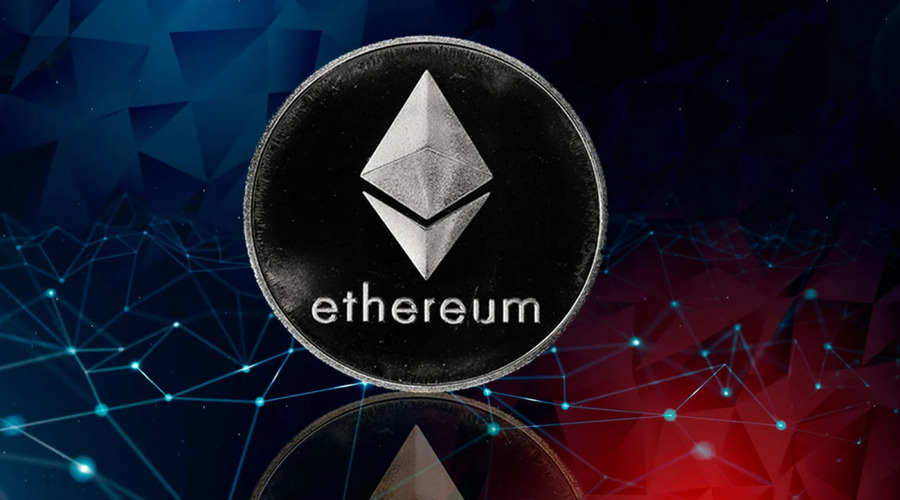Ethereum is a decentralized platform that enables developers to create smart contracts and decentralized applications (DApps) on the blockchain. One of the main use cases of Ethereum is the tokenization of assets, which enables fractional ownership of assets that were previously illiquid. In this article, we will discuss the role of Ethereum in enabling fractional ownership and asset tokenization.
What is Asset Tokenization?
Asset tokenization is the process of converting an asset, such as real estate, art, or stocks, into a digital token that can be traded on the blockchain. The token represents ownership of a fraction of the asset, which can be divided into smaller units, enabling fractional ownership.
Why Asset Tokenization is Important?
Asset tokenization has the potential to democratize access to investments and make previously illiquid assets accessible to a wider audience. For example, real estate is traditionally an illiquid asset, but by tokenizing it, it can be divided into smaller units, making it accessible to more investors.
Asset tokenization can also reduce the cost of issuing and managing securities. It eliminates the need for intermediaries, such as banks and brokers, and reduces the administrative costs of managing investments.
The Role of Ethereum in Asset Tokenization
Ethereum provides a platform for developers to create smart contracts, which can be used to create digital tokens that represent assets. The ERC-20 standard is the most widely used token standard on Ethereum and has been used to create thousands of tokens.
ERC-20 tokens are fungible, which means that each token is interchangeable with every other token. This makes them ideal for representing assets that are divisible and tradable, such as stocks or commodities.
ERC-721 tokens are non-fungible, which means that each token is unique and represents a specific asset. This makes them ideal for representing assets that are unique, such as art or real estate.
The Role of Smart Contracts
Smart contracts are self-executing contracts with the terms of the agreement between buyer and seller being directly written into lines of code. Smart contracts enable the automation of contractual agreements, making them more efficient and secure.
Smart contracts are used to govern the issuance and transfer of tokens, as well as the distribution of dividends or other benefits. They can also be used to enforce the rules governing the asset, such as the terms of a lease or the rights of shareholders.
Benefits of Tokenization on Ethereum
Tokenization on Ethereum provides several benefits, including:
Liquidity:
Asset tokenization enables fractional ownership of previously illiquid assets, making them more accessible and tradable.
Transparency:
The blockchain provides transparency, enabling investors to track the ownership and transfer of assets.
Efficiency:
Smart contracts automate the issuance and transfer of tokens, reducing the administrative costs and making the process more efficient.
Security:
The blockchain provides security, reducing the risk of fraud and ensuring the integrity of the ownership and transfer of assets.
Challenges and Risks
While asset tokenization on Ethereum provides many benefits, there are also some challenges and risks to consider.
Regulatory compliance:
The regulatory landscape for tokenized assets is still evolving, and there may be legal and regulatory barriers to the tokenization of certain assets.
Market volatility:
While tokenization can increase liquidity, it can also make assets more susceptible to market fluctuations. This can increase the risk for investors, especially in cases where the asset is illiquid and there is limited trading volume.
Finally, there is the risk of security breaches and hacks. While the blockchain provides security, smart contracts and token exchanges are still vulnerable to hacks and other security breaches. This can lead to the loss of funds and damage to the reputation of the tokenized asset.
Examples of Asset Tokenization on Ethereum
There are already several examples of asset tokenization on Ethereum. Let us look at them.
Tokenization of real estate:
Real estate can be tokenized, divided into fractions, and traded on the blockchain. This makes it more accessible to investors and provides a new avenue for real estate crowdfunding.
Tokenization of art:
By tokenizing art, ownership can be divided into fractions, making it more accessible to a wider audience. This can also help to increase liquidity in the art market, which is traditionally illiquid.
Finally, there is the tokenization of stocks and securities. By tokenizing stocks, companies can issue and manage securities more efficiently, reducing the administrative costs and making it easier for investors to trade and transfer ownership.
Some important points to consider:
Decentralized Finance (DeFi)
Decentralized Finance (DeFi) is a growing trend in the blockchain space that uses smart contracts and decentralized protocols to provide financial services without the need for intermediaries. DeFi protocols on Ethereum enable users to lend, borrow, trade, and earn interest on their assets in a decentralized manner. Asset tokenization on Ethereum is a key component of the DeFi ecosystem, as it enables the creation of synthetic assets that can be used to replicate the performance of traditional assets, such as stocks, bonds, and commodities.
Security Tokens
Security tokens are a type of token that represents ownership in a real-world asset, such as stocks, bonds, or real estate. Security tokens differ from utility tokens in that they are subject to securities regulations and must comply with the laws governing the issuance and transfer of securities. Ethereum provides a platform for the issuance and trading of security tokens, enabling companies to raise capital through the issuance of tokenized securities.
Governance Tokens
Governance tokens are a type of token that gives holders the right to vote on the future direction of a project or protocol. Governance tokens are commonly used in decentralized protocols, such as DeFi platforms, to enable community-driven decision-making. Governance tokens on Ethereum are typically ERC-20 tokens that provide holders with voting rights and other governance-related privileges.
NFTs (Non-Fungible Tokens)
NFTs (Non-Fungible Tokens) are a type of token that represents ownership of a unique digital asset, such as artwork, collectibles, or game items. NFTs differ from fungible tokens, such as ERC-20 tokens, in that each NFT is unique and cannot be exchanged for another NFT of equal value. NFTs on Ethereum are typically ERC-721 tokens that provide a way to authenticate and verify the ownership of digital assets.
Conclusion
In conclusion, Ethereum has played a significant role in enabling asset tokenization and fractional ownership. While there are challenges and risks to consider, the benefits of asset tokenization on Ethereum are numerous. It provides increased liquidity, transparency, efficiency, and security, making previously illiquid assets accessible to a wider audience.
As the use of blockchain technology and smart contracts continues to grow, we can expect to see more assets being tokenized and made accessible to a wider audience. This has the potential to revolutionize the way we invest and manage assets, making it easier and more efficient for individuals and organizations alike.




